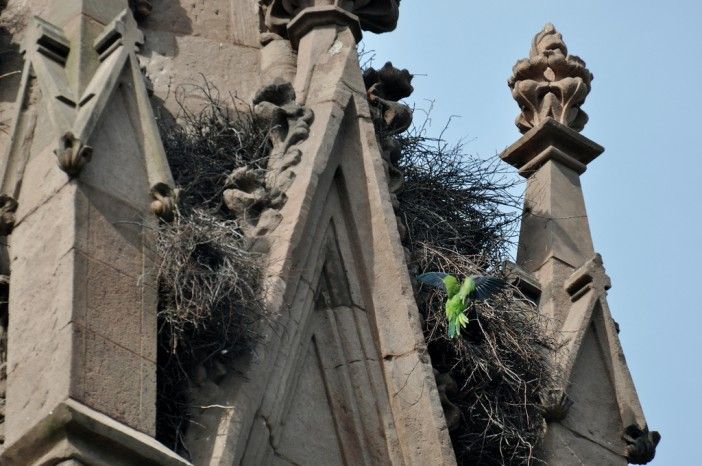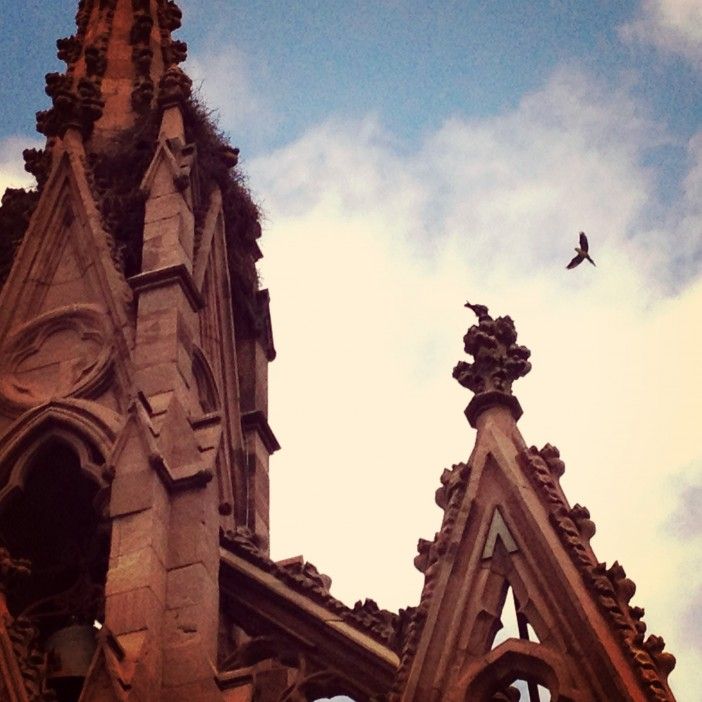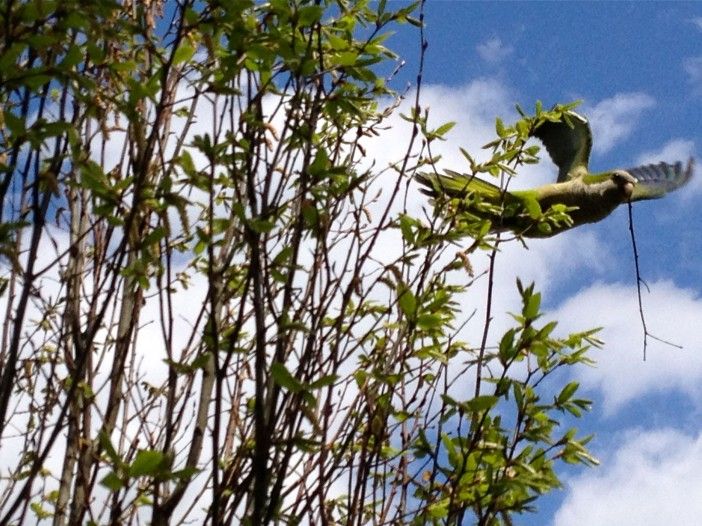5 Things You Might Not Know About The Green-Wood Parrots


Frequent visitors to Green-Wood Cemetery are accustomed to seeing (and hearing) the brilliant green quaker parrots, aka monk parakeets, flitting about the gothic brownstone gate at its entrance. But here are some things you may not know about these Brooklyn immigrants.
1. Where Did They Come From? It’s often reported that a whole shipment of monk parakeets bound for pet stores were accidentally released from a shipping container at Kennedy Airport, but according to The New York Times this is probably a myth. Most likely, the parrots of New York City are former pets (and their descendants), sprung one by one from their cages by careless or perhaps freedom-loving owners. Liberated parrots have formed colonies in every borough of New York, but the Green-Wood group is considered one of the largest in the city.

2. Don’t They Get Cold? Despite their tropical colors, monk parakeets (known as Myiopsitta monachus to scientists) are native to Argentina, where they endure hot, humid summers and cold winters, so they are well adapted to New York City weather.

3. Homebodies: Monks are the only type of parrots that build stick nests.
4. City Slickers: Monk parakeets prefer an urban lifestyle, building large, elaborate nests with multiple apartments, and a separate entrance for each breeding couple. (No wonder they’ve made their home near Park Slope!) Sometimes an older sibling will help with rearing the new hatchlings, an unusual behavior for birds of any kind.
5. Poop Factor: Parrot poop, unlike highly acidic pigeon guano, is fairly benign; the Green-Wood groundskeepers allow the nests to remain on the gate because the parrot colony seems to control the numbers of pigeons who roost there.
You can see the the parrots in person at the main entrance to Green-Wood Cemetery, 550 25th Street at 5th Avenue, which is open from 7:45am-5pm daily.




